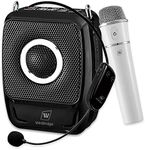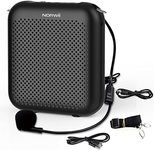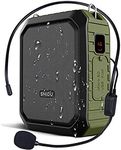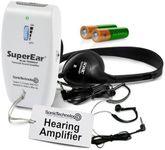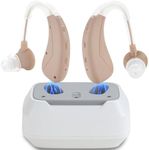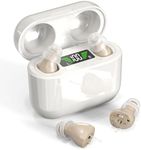Buying Guide for the Best Hearing Amplifiers
When choosing a hearing amplifier, it's important to consider your specific hearing needs and lifestyle. Hearing amplifiers are designed to enhance sound for individuals who experience mild to moderate hearing loss. They are not a replacement for hearing aids but can be a helpful tool for those who need a little extra boost in certain situations. To find the best fit for you, consider the key specifications and how they align with your daily activities and hearing requirements.Sound AmplificationSound amplification is the primary function of a hearing amplifier, which increases the volume of sounds in your environment. This is crucial for individuals who struggle to hear conversations or ambient noises. Amplification levels can vary, with some devices offering mild boosts and others providing more significant amplification. Consider your level of hearing loss and the environments you frequent. If you need help hearing in quiet settings, a lower amplification might suffice, whereas noisier environments might require higher amplification.
Frequency RangeThe frequency range of a hearing amplifier determines which sounds are amplified. Human hearing typically ranges from 20 Hz to 20,000 Hz, but most speech occurs between 250 Hz and 6,000 Hz. A good hearing amplifier should cover the essential frequencies for speech clarity. If you primarily need help with understanding conversations, focus on amplifiers that enhance the mid-range frequencies. For a broader range of sound, look for devices that cover a wider frequency spectrum.
Battery LifeBattery life is an important consideration as it affects how long you can use the device before needing to recharge or replace the batteries. Longer battery life means less frequent interruptions and maintenance. Hearing amplifiers can have rechargeable batteries or disposable ones. If you prefer convenience and less frequent battery changes, opt for a model with a longer battery life or rechargeable options. Consider your daily usage patterns to determine the best battery life for your needs.
Size and ComfortThe size and comfort of a hearing amplifier can greatly impact your willingness to use it regularly. These devices come in various sizes, from small in-ear models to larger behind-the-ear designs. Smaller devices are more discreet but may be less comfortable for extended wear. Larger models might offer more features but can be more noticeable. Consider how long you plan to wear the amplifier each day and choose a size that balances comfort with functionality.
Noise ReductionNoise reduction technology helps to minimize background noise, making it easier to focus on the sounds you want to hear. This is particularly useful in environments with a lot of ambient noise, such as restaurants or crowded places. Some amplifiers offer basic noise reduction, while others have advanced features to filter out unwanted sounds. If you often find yourself in noisy settings, look for a device with strong noise reduction capabilities to improve your listening experience.
AdjustabilityAdjustability refers to the ability to customize the settings of the hearing amplifier to suit your specific hearing needs. This can include volume control, frequency adjustments, and different listening modes. More adjustable devices allow for a personalized hearing experience, which can be beneficial if your hearing needs vary throughout the day. If you require flexibility in different environments, choose a model with multiple settings and easy-to-use controls.

